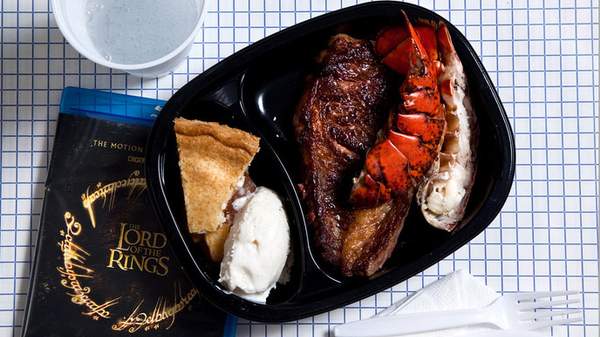Overview
The tradition of the 'last meal' is a complex one. In early Europe, the gesture functioned as an act of appeasement — a small token to ward off the spirit of the accused haunting its executioners. In modern times, the act is somewhat less superstitious. A little sweetener to the incalculable moral dilemma of corporal punishment. This is what NZ-born, Brooklyn-based photographer Henry Hargreaves sought to explore in No Seconds, his series of eerie re-creations of those final bites taken by America's most wanted.
At a glance, the 12 visually rich photographs seem harmless enough. The shots of chicken and peas resemble something your mother might make you on a trip back home, and the steak and eggs are reminiscent of a meal picked up at a country diner. Of course, most plates are full of comfort food; the same kind of thing you could pick up one particularly hungover morning, or devour with a hint of shame at night.
This empathy is exactly what's so worrisome about the series. With the camera positioned above each meal, Hargreaves invariably puts you in the seat of the killer. He forces you to reminisce about home-cooked meals or how much you love fresh strawberries mere moments before your eye wanders to the label reading "John Wayne Gacy ... Rape, 33 counts of murder".
In an interview for the exhibition catalogue, Hargreaves said he wanted "the viewer to think of [the prisoner] as a person for a moment instead of them being anonymous". "It's a subject that people can relate to and are curious about," he said. "We all eat and we all die." Of course, the circumstances do differ.
The series is further complicated by the fact the tradition may be on the way out in some places. In 2011, Texas — a state well-known for its continued support of the death penalty — put an end to last meals claiming it a waste of taxpayer funds. A premise made complicated by inmates such as Victor Feguer. Hung in 1963 for kidnap and murder, Feguer asked for just a single olive with its pit. Apparently, he thought it might grow into an olive tree from inside his body and hoped it would make use of him as a symbol of peace.
Regardless of your politics, the photographs are definitely food for thought. See the series in full at Hargreaves' website.
Via Buzzfeed.
